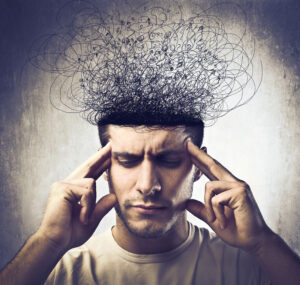An Often Overlooked Neurological Injury With Whiplash

Many think a whiplash is just a “simple” strain sprain injury and there should be full recovery in about 8 weeks. Yet evidence shows that up to 40% of persons sustaining neck trauma because of a motor vehicle crash will go on to have chronic persistent problems. (1,2) One often overlooked neurological injury related to whiplash, and is a significant predictor of long term pain and disability, is injury to sensorimotor control.
What is Sensorimotor control
Sensorimotor control is the process by which the central nervous system processes incoming sensory information from the different parts of the body to create a working body picture: sort of like a virtual body in the brain. This helps the brain’s understanding of how the body is positioned and moving. This complex neurological system is involved in balance, posture head and eye movement and proprioception.
Basic components and how they work
The sensorimotor control system is influenced by many structures, however three of the major structures that control our balance, posture and body movements are the eyes, inner ear (vestibular) and the cervical spine (neck). Sensory input (nerve messages) from these areas converge and fuse together in an area of our brainstem called the vestibular nuclei.
This vestibular nuclei then sends messages up to the muscles controlling the eyes and down the spinal cord to control the muscles of the spine, arms and legs. This is accomplished by 3 main neurological reflexes
Cervico-Occular Reflexes
This reflex is involved in helping us keep our eyes focused as we move our head. As we move, the joints in our neck and muscle fibers sends messages to the vestibular nuclei. It in turn, sends messages to the muscles of the eye, causing them to contract, and move our eyes to maintain our focus. Thus, eye movement is reflexively connected to neck movement.
Cervicospinal Reflexes
This reflex is involved in our overall balance as we move our head and neck. As we move the joints in our neck and muscle fibers sends messages to the vestibular nuclei. In turn, it sends messages down the spinal cord to control our spinal muscles and limbs to keep the posture stable. Thus, our postural stability is reflexively connected to our neck movement.
Cervicocollic reflexes
This reflex is involved in stabilizing/orienting the head in relationship to body movement. Nerve messages from the little muscles in the neck, send messages to the vestibular nuclei. Moreover sends messages down the spinal cord to the larger muscles in the neck. This causes the muscles to activate, and hold the head in a coordinated manner with the body. Therefore, control of our head movement in relationship to our body movement is a reflex action.
How a whiplash injury affects these reflexes
Ok, so how does a whiplash injury affect this? The typical whiplash causes injuries to the joints, muscles and ligaments in the neck. When these structures are injured, it affects both the nerves in these areas as well as altering the normal joint motion. This results in the typical GIGO – Garbage In, Garbage Out.
This abnormal motion causes faulty nerve messages to be sent to the brainstem. This in turn, leads to inaccurate control messages being sent out to control neck movement, postural stability, balance and coordinated movement. This sensorimotor control injury can result in dizziness, balance issues, blurred vision, neck stiffness, lack of coordination and many others.
It has been noted that these deficits can appear early after an injury (1) and can be related to persistent symptoms and a poor prognosis. (3,4)
Documentation
There is a battery of tests that can be performed in office to document this injury and the resultant motor control deficits. Once diagnosed, the appropriate exercises along with specific neck adjustments have been shown to provide great results.
Conclusion
Whiplash neck injury, in many cases, is more than a strain/sprain; it is a neurological that can produce a long-term affect in balance, movement, and coordination. Not to mention accelerated disc degeneration and long-term pain.
In our office, we regularly screen for this injury. If found, we have treatment protocols, which at times, include referral for physical therapy. In our records, we lead with the diagnosis: “Other symptoms and signs involving the nervous system: Neck pain co-occurrent with neurological deficit following whiplash injury to neck (R29.818).”
- REFERENCES
- 1. Sterling M, Jull G, Vicenzino B, Kenardy J, Darnell R. Development of motor system dysfunction following whiplash injury. Pain. 2003;103:65-73.
- 2. Kamper SJ, Rebbeck TJ, Maher CG, McAuley JH, Sterling M. Course and prognostic factors of whiplash: A systematic review and meta-analysis. Pain. 2008;138:617-29.
- 3. Pleguezuelos E, Perez ME, Guirao L, Palomera E, Moreno E, Samitier B. Factors related with clinical evolution in whiplash. Med Clin (Barc). 2008;131:211-5.
- 4. Schreiber AL, Fried GW. Demographic characteristics of 38 patients injured in motor vehicle accidents referred by chiropractors to physiatrists. . J Manipulative Physiol Ther. 2009;32:772-5.
